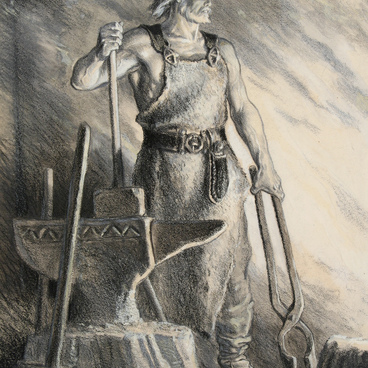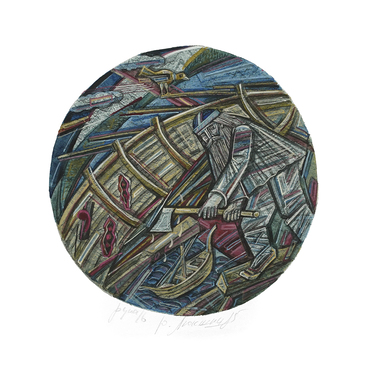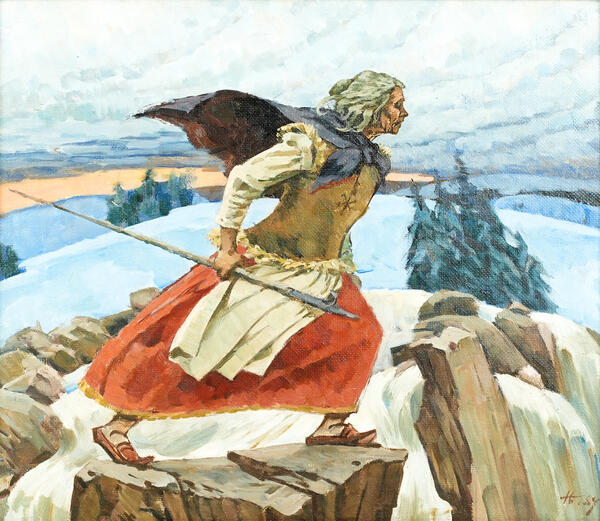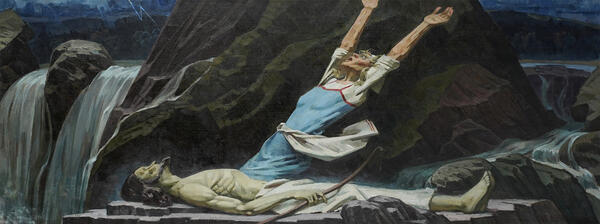Nikolai Ivanovich Bryukhanov was a graphic artist and book illustrator. He was born in 1918 in the city of Vyshny Volochyok. In 1958, he graduated from the Graphics Department of the Ilya Repin Institute of Painting, Sculpture, and Architecture. That year, he began working in Karelia, primarily, in book illustration. In 1967, he designed a commemorative edition of the “Kalevala” with illustrations by Tamara Yufa.
In 1981, he began working on a series of watercolor paintings titled “The Motifs of the ‘Kalevala’ Epic Poem”. He was interested in depicting heroic deeds from the Kalevala legends. In creating a series of paintings dedicated to the ‘Kalevala’, the Karelian artist Nikolai Bryukhanov depicts heroes in action, driven by their passions, full of physical and spiritual strength and beauty.
The relationship between men and women in the epic poem is centered around the culminating event — the wedding, which is traditionally presented in the form of a lengthy and highly detailed ceremony. Rumors about the beauty of women from Pohyola drive the grooms to seek the northern land, undertaking quests and feats and completing various difficult tasks. However, the obstacles they overcome and deeds they accomplish are, in essence, part of the courtship ritual.
Ilmarinen is a dignified man, who is reserved, composed and always serious. He is deliberate in his actions and does not start new ventures that have nothing to do with his craft of blacksmithing. However, it is in his forge where he thrives, crafting swords, spears, plows, sickles, and even rings and other pieces of women’s jewelry. One day, Ilmarinen fashions a true masterpiece out of gold and silver — a beautiful maiden, who he admires. His proudest achievement, however, is the Sampo.
The “Kalevala” also features other feats of
Ilmarinen, through which he earns the hand of a maiden from Pohyola. During his
courtship in Pohyola, he completes several dangerous tasks: plows a field of
snakes, captures Tuoni’s bear and Manala’s wolf, and catches an enormous fish
from the Tuoni river. He completes these tasks thanks to the guidance of the
young maiden. As a result, Pohyola’s hostess, Louhi, lets him marry her
daughter. The culmination of this process is the wedding feast, which includes
the slaughter of a large ox and the brewing of beer according to the ancient
recipe of Osmotar.




